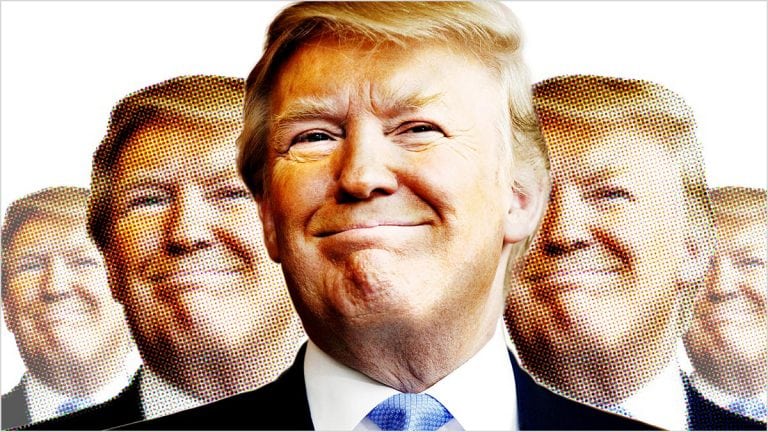Mapping Trump’s Empire: Assets and Liabilities
The map of empire is a shorthand measure of the vectors, reach and durability of global power and wealth. The map of empire is changing -- adding and subtracting assets and liabilities, according to the successes and retreats of domestic and overseas power centers. While the US empire has been engaged in intense conflicts in the Middle East, the imperial map has been enlarge elsewhere at lower cost and greater success.
The US has gained military, economic and political advantages. In the case of Argentina, political and economic advances preceded military expansion.
financial capital. President Macri then followed up by inviting the Pentagon and US intelligence services to establish military bases, spy stations and training operations along its borders. Equally important, Argentina embraced the US directives designed to overthrow the government of Venezuela, undermine Bolivia’s nationalist government under Evo Morales and pursue a policy of US-centered regional integration.
While Argentina is a useful political and military addition to the US empire, it lacks access to the US market -- it still depends on China - and has failed to secure a strategic trade agreement with the European Union. Washington has enlarged its military presence with a one-legged client.
Mexico has served a multitude of military and economic functions - from billion dollar manufacturing platforms to multi-billion dollar laundering of narco-profits to US banks.
Brazil is the new addition to the empire with the ousting and arrest of the leaders of the Workers Party. The shift in political and economic power has enhanced US influence through its leverage over the wealthiest country in the continent. In sum,the US has enlarged imperial influence and control via its acquisition of Latin America. There is one caveat: At least in the cases of Brazil and Argentina, the US advance is tentative and subject to reversal, as it lacks firm economic and political foundations.
If Latin America reflects an enlargement and upsurge of US imperial influence, the rest of the global map is mostly negative or at best contradictory. The empire-building mission has failed to gain ground in Northeast Asia, the Middle East and North Africa. In Europe, the US retains influence but it appears to face obstacles to enlarging its presence. The key to the enlargement or decline of empire revolves around the performance of the US domestic economy.
The determination of the US in remapping the global empire is most evident in Asia. The most notable shift in US political and economic relations in the region has taken place with China’s displacement of the US as the dominant investment, trading infrastructure building and lending country in the region. Moreover, China has increased its role as the leading exporter to the US, accumulating trade surpluses of hundreds of billions of dollars each year. In 2017, China’s trade surplus reached $375 billion dollars.
Middle East , North Africa and West Asia. US Intervention from Libya and Southern Sudan, Somalia, across to Syria, Palestine, Iraq, Iran and Afghanistan has resulted in enormous costs and dubious advances. The results are meagre except in terms of suffering. The US has spread chaos and destruction throughout Libya and Syria, but failed to incorporate either into an enlarged empire. The Middle East wars, initiated at the behest of Israel, have rewarded Tel Aviv with a sense of invulnerability and a thirst for more, while multiplying and unifying US adversaries.
Empires are not effectively enlarged through alliances with with armed tribal, sectarian and separatist organizations. Empires, allied with disparate, fractured and self-aggrandizing entities do not expand or strengthen their global powers.
The US has waged war against Libya and lost the political leverage and economic resources it enjoyed during the Gaddafi regime. It intervened in Somalia, South Sudan and Syria, and has gained enclaves of warring self-serving ‘separatists’ and subsidized mercenaries. Afghanistan, the US’ longest war in history, is an unmitigated military disaster. After seventeen years of warfare and occupation, the US is holed up in the walled enclaves of the capital, Kabul. Meanwhile, the puppet regime feeds on multi-billion dollar monthly subsidies.
alliance with Saudi Arabia and its micro-clients among the Emirate statelets - which are constantly fighting among themselves - as well as Israel, the ‘client’ that openly revels in leading its patron by the nose!
Compared to the period before the turn of the millennium, the US imperial map has shrunk and faces further retrenchment.
following the recovery of its sovereignty and economic growth after the disaster of the 1990’s. With the ascent of President Putin, the US-EU empire lost their biggest and most lucrative client and source of naked pillage. Nevertheless, the US retains its political clients in the Baltic , the Balkans and Eastern and Central European regimes. However, these clients are unruly and often eager to confront a nuclear-armed Russia, confident that the US-NATO will intervene, in spite of the probability of being vaporized in a nuclear Armageddon.
Washington’s efforts to recapture and return Russia to vassalage have failed. Out of frustration Washington has resorted to a growing series of failed provocations and conflicts between the US and the EU, within the US between Trump and the Democrats; and among the warlords controlling the Trump cabinet. Germany has continued lucrative trade ties with Russia, despite US sanctions, underscoring the decline of US power to dictate policy to the European Union.
The Democratic Party and the ultra-militaristic Clinton faction remains pathologically nostalgic for a return to the 1990’s Golden Age of Pillage (before Putin). Clinton’s faction is fixated on the politics of revanchism . As a result, they vigorously fought against candidate Donald Trump’s campaign promises to pursue a new realistic understanding with Russia. The Russia-Gate Investigation is not merely a domestic electoral squabble led by hysterical ‘liberals.’ What is a stake is nothing less than a profound conflict over the remaking of the US global map.
elsewhere.
the one recently proposed by French President Emmanuel Macron.
increasing US isolation with its futile aggression against a dynamic and changing world.
The Trump remaking of the global empire has had uneven results, which are mostly negative from a strategic viewpoint. The circumstances leading to new clients in Latin America is significant but has been more than countered by retreats in Asia, divisions in Europe, turmoil domestically and strategic incoherence.
 James Petras is a world-renowned public intellectual. He is a retired Bartle Professor of Sociology at Binghamton University in Binghamton, New York and adjunct professor at Saint Mary's University, Halifax, Nova Scotia, Canada who has published extensively on Latin American and Middle Eastern political issues.
James Petras is a world-renowned public intellectual. He is a retired Bartle Professor of Sociology at Binghamton University in Binghamton, New York and adjunct professor at Saint Mary's University, Halifax, Nova Scotia, Canada who has published extensively on Latin American and Middle Eastern political issues.

